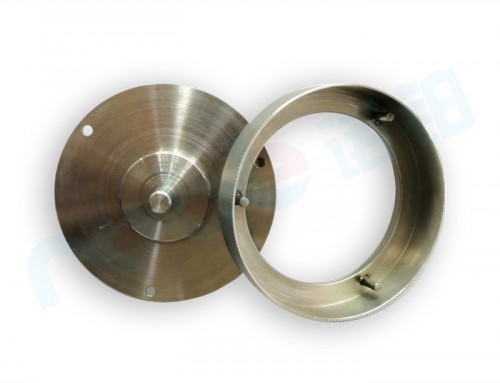Aluminum alloy parts machining, metal parts machining structure at the beginning of the design, you need to meet two major requirements, one is the design requirements, the other is the process requirements. At the same time the structural design of the part should not only consider industrial aesthetics, modeling, but also to consider the possibility of technology. Hardware components on the common structure, mostly by casting (or forging) and machining obtained, it is called the process structure. Knowing the common process structure on parts is the basis for learning part drawings.
Hardware components on the casting process structure
1, casting round corners
In order to facilitate the molding of castings, to avoid sand from the sand mold corner at the sand and casting corners will be washed away to prevent casting corner cracks, loose porosity and shrinkage and other casting defects, so casting the adjacent surface of the intersection Department should be made rounded. For compression molded parts, the fillet ensures that the stock is filled with the stamper and facilitates removal of the part from the stamper. Casting fillet radius generally take the wall thickness of 0.2-0.4 times, can be found out from the relevant standards. The same casting radius of the radius should be the same or close.
2, from the model slope
Modeling, in order to facilitate the removal of wooden mold from the sand, castings in the outer wall along the mold design often set a certain slope, known as the draft (or casting casting slope). The draft of the draft is usually 1: 100-1: 20. When expressed in terms of angle, the hand-made wood is 1 ° -3 °, the metal is 1 ° -2 °, and the shape of the metal is 0.5 ° -1 °.
Casting rounded corners at the intersection of the casting surface, so that the surface of the line of intersection becomes less obvious, in order to make the picture can distinguish between different surfaces, the intersection of the drawing still draw, this line of intersection is often called the transition line . The transitional drawing method is basically the same as the intersecting line drawing method without the fillet.
3, casting wall thickness
In order to ensure the casting quality of the castings and to prevent the speed of crystallization from cooling due to the uneven thickness, the structure is loosened outside the wall thickness so as to cause cracks and the like in the thin and thick phases, the wall thickness of the castings should be uniform or gradual, Thick and local hypertrophy. Wall thickness changes should not be a big difference, this can be set at the intersection of two walls transitional slope. The wall thickness sometimes can not note, and write in the technical requirements.
In order to facilitate the molding, modeling, cleaning, removal of pouring riser and machining, the shape of the casting should be simplified, the shape as straight as possible, the inner wall should reduce the bump structure. Thick castings too easy to produce cracks, shrinkage and other casting defects, but the thickness is too thin and the casting strength is not enough. To avoid the thickness of the thinning on the impact of strength, can be used to compensate for the reinforcement ribs.
Shenzhen Novo-Chi-made aluminum alloy die-casting process, more than ten years experience in aluminum alloy processing, specializing in aluminum die-casting aluminum extrusion processing, not easy to fracture deformation, to provide aluminum parts, metal parts die-casting, extrusion processing, CNC machining, Surface treatment and other one-stop parts processing services.




![[Noble Platinum] CNC Lathe Knife Operation Prone Problems](http://www.china-cncmachining.com/wp-content/uploads/2017/11/thirteen-e1511323361490-500x383.jpg)